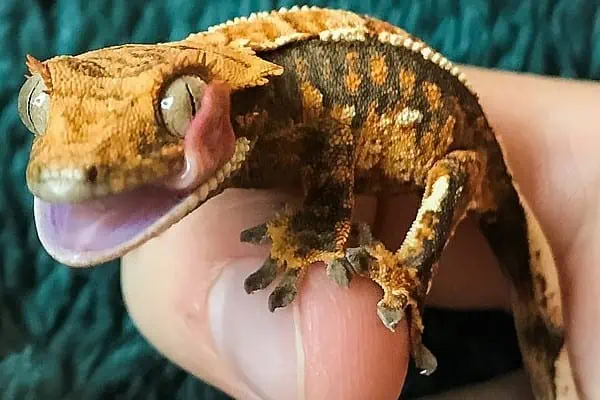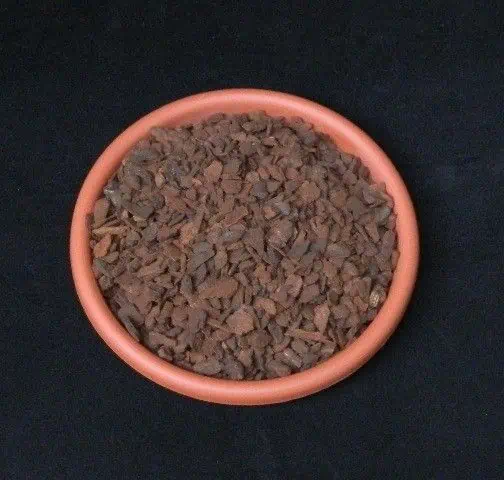Crested geckos are becoming more and more popular all over the world due to how easy they are to maintain. They’re often considered the best and safest choice for first-time lizard owners and children. This is because they’re very docile and their bite isn’t strong enough to cause bleeding.
It’s best to keep Crested geckos alone in 20-gallon tanks. And if you plan on owning a pair, it’s recommended to not use anything smaller than a 30-gallon tank. The space and habitat you provide them with will play a big role in whether they’ll be happy and healthy or anxious and sick lizards.
One of the most important components of a gecko cage is the substrate, and it needs to be as high-quality as possible so the gecko can feel at home.
Types of substrates for Crested Gecko Tanks

There is a wide range of substrates you can choose from and their prices greatly depend on their quality. First-time keepers are advised to start with a fake substrate and fake plants so they can focus on the gecko. When you’re confident that you know exactly what your gecko needs, you can start modifying it so that plants can thrive as well.
Bio-active habitats are the best choice as they encourage the gecko to follow its natural instincts. But you’ll need to know what you’re doing when you’re setting one up. It can be doable for first-time keepers as well but it’s recommended to have an older keeper take a look at the finished product.
As you get better, you should consider only using the bio-active substrate. They’re easier to maintain and it makes the whole vivarium look much more natural and the gecko happier.
Orchid bark
Orchid bark is a low-cost substrate and is probably the most popular choice among vivarium owners. It looks pretty good and it creates a natural aesthetic. One of its main advantages is its great capacity to absorb water and maintain humidity in the enclosure.
You won’t have to worry much about accidental ingestion as it has a very low risk. But to be sure, you can use an extra layer of sphagnum moss. It’s also easy to clean and it needs to be changed monthly.
Cypress Mulch
Another extremely popular substrate is Cypress Mulch. It also creates a more natural look but the advantage is that it’s biodegradable and you can use it in the garden after using it in the enclosure. Its water absorbing abilities are even greater, making it excellent for geckos that need high levels of humidity in the cage.
But for other geckos, it can get too wet and you need to check it regularly. It’s also harder to clean and it has to be changed more often. You should also check the substrate very well so you won’t place any sharp chips inside the tank. Geckos have sensitive feet and sharp pieces can cut them.
Coconut Bark Chips
Coconut Bark Chips are much less popular as they’re relatively new. This substrate is made from chopped and processed hairs of a coconut husk. Sometimes, it also includes processed coconut shells. They also have a medium capability to absorb, making them more versatile.
Newspaper substrate
The best option for keepers that are on a budget or in the middle of an emergency is newspaper substrate. They’re made from wood pulp and older newspapers can be free or at least extremely cheap. You can place them whole or chop them up, it’s your choice. But if you place them whole you can easily change them as they need to be changed daily.
Carpet Substrate
Carpet substrate is another pretty popular choice as it’s very easy to clean. They’re reptile-safe and come in any color. The most popular choices are various shades of green (to resemble grass) or grey (to resemble rocks).
These carpets need to be bought in sets of two so you can use the other when you’re washing one of them. But you should keep in mind that if you put another moist substrate on top of it, you will deal with a very fast bacterial growth in the carpet.
Moss
If you need to make a rain forest vivarium, Moss is the best choice. It’s ideal for maintaining medium to high levels of humidity. Both you and your gecko will love the natural look it offers. You can typically get them in form of flat sheets or small bales. The most popular choice is sphagnum moss.
Soil
Another very affordable and excellent substrate for some geckos is soil. You can easily make it by using the soil you have in your garden. But only if you don’t spray it with chemicals. If you don’t have a garden you can easily get organic soil from the store.
When buying a soil substrate is important to stay away from the products that have fertilizers, herbicides, perlite, manure, or vermiculite. Herbicides, fertilizers, and manure are made with chemicals that are very toxic to reptiles. And the vermiculite and perlite can cause impaction if they’re ingested by the Crested gecko.
Wood Shavings
Wood shavings are also quite popular but you should be very careful when choosing the right substrate. They look natural and can absorb quite a bit of water. More than that, they’re on the cheap side of the spectrum.
The best choices are aspen and pine wood shavings as they’re heat-treated to remove any toxic oils. Aspen is the better choice because it’s dust-free and has no toxic chemicals. But you should never use cedar shavings as they contain volatile oils that can also have a distinctive smell. This can cause kidney and respiratory problems to geckos.
Bioactive substrate for reptile tanks – Why and How?
No matter how fancy you make the cage, nothing will compare to the crested gecko’s natural habitat. The closest you can get is by using a bio-active substrate. This will make the vivarium come to life and the gecko will feel more like home. This will make it more active and happier.
You can make the substrate all by yourself or you can get it from a reputable seller. It’s always recommended to make your own so you can make it fit your exact enclosure and it will make it much easier when it’s time to replace it.
What are its advantages?
One of the biggest advantages of the bio-active substrate is its very long lifespan. All you have to do is clean the poop and change the water every single day. These substrates usually last up to 6 months, making them extremely affordable.
Their aesthetic is also a big bonus as they make the enclosures look much more natural. More than that, you can place the plants directly into the substrate, without bothering with pots any longer. Your gecko will feel a lot better in a more natural habitat.
How to make bioactive substrate
Making the bio-active substrate is quite easy. You need to start with a solid base of organic soil. You can find it in many stores. It’s important that you make sure the soil is organic, and that it doesn’t have fertilizers, perlite, or vermiculite.
The second layer needs to add structure and be capable of retaining water, like coconut husk. And the last layer should be some type of moss so your gecko won’t have any ingestion accidents. The last thing you need to add is a few very small insects that will keep the substrate alive and deal with the discomposure.
Another way to do a bio-active substrate is just to mix everything together and place it in the tank. You’ll need to use 40 or 50% of organic soil, 10% peat moss, 30% coconut husk, 10% sand, 5% orchid bark, and 5% cypress mulch. In the end, add the insects and place a layer of sphagnum moss on top.





